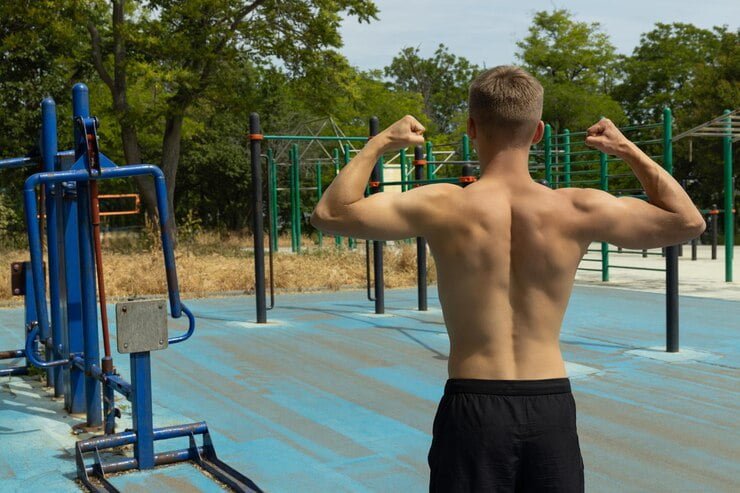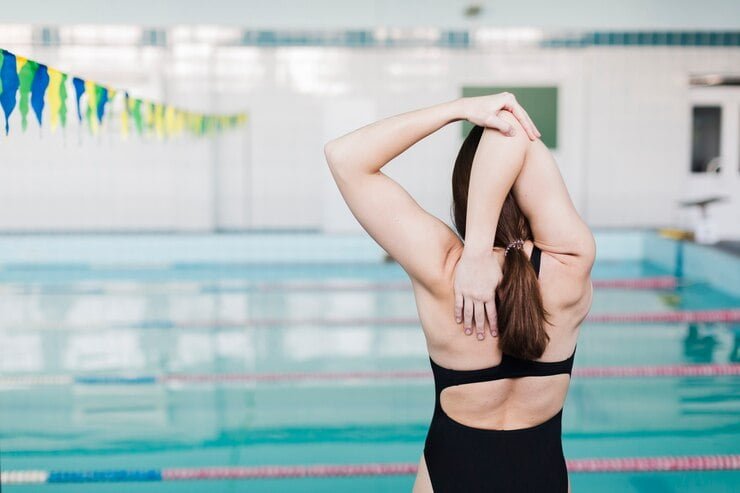
Swimming is a whole-body exercise that uses nearly every major muscle group, but most of the stress and strain is placed on the shoulders. Whether you’re a competitive swimmer, casual lap enthusiast or just an athlete looking to improve your fitness program, it’s important that you have strong and supple shoulders.
Therefore, we will look at exercises targeting shoulder strength, stability and flexibility – all of which are key elements in swimming performance at its highest level.
Why Shoulder Exercises?
The shoulder is one of the most complex joints in our bodies due to its great range of motion that makes it ideal for swimming. Interestingly enough, this trait also makes it prone to injuries as well. Specific exercises can help condition it as follows:
Enhance Performance:
Powerful shoulders result in more efficient strokes, greater speed and better stamina.
Prevent Injuries:
Strengthening muscles around them reduces the chances of common shoulder complications associated with swimming such as torn rotator cuffs.
Increase Flexibility:
Stretching routines retain the mobility necessary for advanced swimming techniques.
Efficient Shoulder Exercises for Swimmers
The following are some important shoulder exercises specifically designed for swimmers that emphasize on strengthening and stabilizing the shoulder girdle.
Inner Rotation
How to Do It:
Start by securing a resistance band at waist height.
Hold the loose end of the band with your closest hand while standing sideways to it.
Then bring your elbow next to your body and pull across your chest with a band.
Repeat slowly from where you started.
Benefits:
By focusing on subscapularis muscle of the rotator cuff this exercise helps stabilize and protect the shoulder joint while doing freestyle (crawl) or any other stroke used during swimming.

Outer Rotation
Instructions:
In order to do external rotation again take up a position similar to what was done when performing inner rotation except holding the band with your hand that is far away from the point of attachment.
Next, with your elbow bent and close to your side, rotate your arm outward away from your body.
Return to starting position with control and repeat.
Benefits:
Infraspinatus and teres minor are strengthened by external rotation hence making shoulder more stable during repetitive swimming motions.
Face Pulls
Instructions:
Affix a resistance band in a high position.
Step back holding the band in both hands and stretching them out in front of you.
Bring the band towards your face as you pinch together the shoulder blades while moving elbows backwardly.
Get back to the starting point slowly before repeating this process again several times.
Benefits:
These movements can be used to develop scapular muscles and rear deltoids for better aquatic posture and alignment.
YTWL Exercise
How it’s done:
Lean on an incline bench face down. The weights should be light enough in one’s hands however, they should not be absent all together when performing this exercise since they add more resistance which is good for gaining strength faster without using heavier weights that could cause strain on other joints such as knees or wrists (
Perform the following sequence:
Y – Raise the dumbbells forward in a Y shape.
T – Extend arms out to the side in a T shape.
W – Bend elbows and pull them back in a W shape.
L – Rotate arms outward, forming an L shape with elbows bent.
Each position should be held momentarily before moving to the next one

Benefits:
The whole shoulder girdle is targeted by this comprehensive workout that helps swimmers gain better coordination skills and muscle balance – important elements necessary for healthy shoulders of a swimmer
Other tips to take care of shoulders across exercises
Always start with dynamic stretches before finishing off with static ones so as not compromise on flexibility which needs to always remain at its optimum levels alongside muscle elasticity (
Cross-train:
Doing some of the exercises in the gym, such as Pilates or Yoga, can help you develop body strength, flexibility and balance.
Rest and Recovery:
Ensure enough recovery period and listen to your physique so that overuse injuries are avoided.

Frequently Asked Questions
Q1. How often should I do these shoulder exercises?
Ideally, perform shoulder-strengthening workouts 2-3 times per week alongside swimming. You can tailor this frequency depending on your individual needs and the intensity of training.
Q2. Can I do these exercises if I have a sore shoulder?
Shoulder pain requires you to seek a proper diagnosis from a healthcare practitioner. Although these exercises are usually preventive, they might require changes or avoidance in consideration of one’s situation.
Q3. Will these exercises bulk up my shoulders?
Not necessarily. They focus more on endurance and stability instead of hypertrophy (muscle growth). Their primary aim is improvement on functionality and performance rather than massive muscle gain.
Conclusion
These targeted shoulder exercises, when added into your training routine, will greatly boost your swimming skills while minimizing injury risks. Strengthening and stabilizing the muscles around the shoulder acts as a base for efficient strong strokes in water.
Don’t forget that consistency pays off! Include these workouts in your routine schedule closely monitoring how your body responds. Working with a fitness expert is essential if you want to maintain good posture during work out sessions or if you need some professional advice concerning routines that suit you personally.
Prepare yourself for better strength, skillfulness and toughening against adversity in the course of your swimming activities! Enjoy swimming!